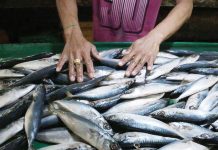
AS A DEVELOPING country with more than 110 million population, the Philippines records various diseases, including communicable and non-communicable, which account for more than 300,000 deaths per year, according to the World Health Organization. This creates a need to establish a biobank center, Genome-wide Association Studies (GWAS), and Phenome-wide Association Studies (PheWAS).
With the challenges to contact the national level in coming up with a conglomerate database for establishing a common data system, Dr. Gerard Dumancas, a Department of Science and Technology (DOST) Balik Scientist, came up with a project to start within Western Visayas, where existing diseases are also present and growing in numbers.
GWAS is an approach in research that examines the association of a certain disease with biomarkers, while the PheWAS refers to the opposite where it associates the biomarkers with the various diseases.
Dr. Dumancas sets to examine the power and other requirements such as resources, acceptability, demand, implementation or practicality, adaptation, and integration to establish these two-approach used in genetics research for potential Filipino genetic health determinants.
As the project took a lot of considerations, Dr. Dumancas concluded that establishing GWAS and PheWAS is presently not feasible within Western Visayas. However, the medical community in the region is very receptive to collaborate in pursuing the project.
Meanwhile, one of the projects of Dr. Dumancas is to determine the feasibility study for establishing a biobank in Western Visayas.
Defined as a biorepository, the biobank stores human biological samples and tissues like blood, saliva, and urine, along with any associating information.
While this could be considered a great contribution to the science and technology innovation in the country, the overall start-up biobank is quite expensive.
Dr. Dumancas shared that as for the United Kingdom biobank building, the community spent $15 million; and $41 million for the Taiwan biobank building.
He also stressed that “the cost for Filipino biobank would fall between $15 million to $50 million for the building alone.” Aside from that, it will also cost maintenance, payment for workers, and patient recruitment.
If the biobank is set to be established with assistance from the DOST, it will provide new insights as to how a certain disease responds, leading to the advancement in life science in the country. The biobank building will create a sturdy collaboration with the Philippine Genome Center, National Center for Mental Health, and neighboring hospitals in the region.(DOST-6)



